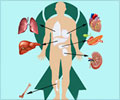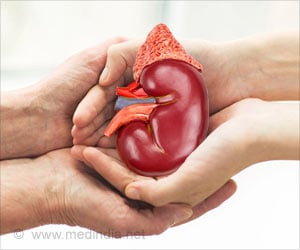A reconstructive surgeon has been investigating therapies that could allow the body to accept donor tissue without the use of immunosuppressive medication.
Once upon a time the idea of attaching a donor limb onto a patient's body would have been the stuff of science fiction. But todya about two-dozen people around the world have received hand transplants. Thomas Tung, M.D., a reconstructive surgeon has been conducting research in this comparitively unorthodox realm of surgery, to investigate therapies that could potentially allow the body to accept donor tissue without the use of immunosuppressive medication.
A Washington University plastic and reconstructive surgeon at Barnes-Jewish Hospital, Tung has reattached patients' own hands, but he has never performed a hand transplant - he feels the health risks of immunosuppressive drugs are too high to warrant the surgery. But with his research, he is working toward the day when reconstructive surgery can make use of donor tissues without the danger of complications from anti-rejection medication or the risk of tissue rejection."Once we figure this out, it's going to open up a new whole field of reconstructive surgery," says Tung, assistant professor of surgery. "It will allow surgeons to replace not just injured hands, but lips, noses, ears, scalp and other specialized tissues anywhere on the body."
To reach this goal, Tung has been researching transplantation of hindlimbs to mice from unrelated donors - but here's the twist - without giving the mice immunosuppressive drugs. At this time, Tung is the only researcher in the United States investigating limb transplantation with this protocol, which uses proteins called costimulation-blocking antibodies.
With current treatment methods, all transplantation patients take medications that reduce the function of their immune systems so their bodies don't reject the foreign tissue. But long-term use of immunosuppressive medication raises the risk of infection and cancer because the weakened immune system is unable to ward off these threats. Furthermore, immune suppression therapy eventually fails, and transplanted organs undergo rejection an average of 10 years after surgery.
"The holy grail of transplantation research is to find a way to produce permanent tolerance without the need for any immunosuppressive medication," Tung says. "That's what I'm investigating with my mouse model."
Tung's work in limb transplantation in many ways parallels research being conducted in organ transplantation. But limb transplantation entails different challenges because it involves several kinds of tissue: skin, muscles, tendons, nerves and bone. Each of these elicits a different degree of response from the recipient.
Advertisement
In recently published research, Tung demonstrated the effectiveness of costimulation-blocking therapy, which is designed to induce tolerance to the tissues in a transplanted hindlimb but not to globally suppress the immune system.
Advertisement
In addition to the costimulation blockade, mice received donor bone marrow, either as an infusion or simply as the marrow present in the bones of the donor hindlimb. Earlier research suggested that donor bone marrow could help induce transplant tolerance, and Tung found that the small amount of bone marrow within the hindlimb was as effective as a large infusion of bone marrow cells given intravenously.
While the costimulation blockade/bone marrow therapy did not result in permanent tolerance of the transplanted hindlimb, it greatly extended the time before the mice rejected the new limb.
In one set of experiments, mice not given a costimulation blockade rejected their new limbs after about 10 days, whereas the muscles and bone of the transplanted limb in blockade-treated mice survived an average of 222 days.
"Research into costimulation blockade is relatively new," Tung says. "And just over the last few years, a half dozen new costimulatory pathways have been recognized. Researchers have found that when you combine several antibodies to block several pathways at once, it may increase the effectiveness of the therapy. That's a big step toward tolerance of transplanted tissue."
The next stage of Tung's research will focus on these new costimulation blockers. In addition, Tung will collaborate with colleague Susan E. Mackinnon, M.D., the Sydney M. Jr. and Robert H. Shoenberg Professor of Surgery and chief of the Division of Plastic and Reconstructive Surgery, to investigate regeneration of nerves in transplanted limbs.
"Patients receiving a hand transplant don't need it to survive -- they are getting it to improve their functionality," Tung says. "If the new hand doesn't work well because of nerve problems, that defeats the purpose of the surgery. I am also involved in research on nerve regeneration, and I would like to use that knowledge to improve regeneration of nerves in limb transplants."
Source-Eurekalert
NLA







